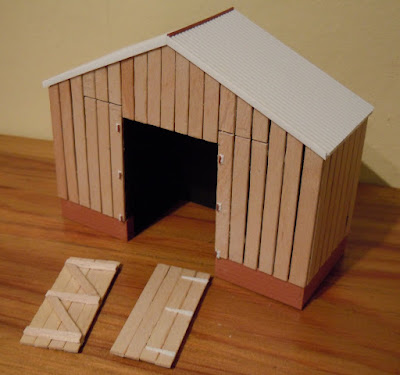Having the Lister reassembled and working I have run it over every part of the layout to test out the trackwork. I really must make the off-stage track, as without it there is no way from the front sidings to the back sidings! That aside it all seems to work ... except that on the short-radius point that is the kick-back to the workshop the loco causes a short circuit and stops.
It seems that although the gap between the point blade and the stock (fixed) rail is correct for the back-to-back measurement of the wheels, i.e. the same as the check rails, it is close enough for the back of the wheel to touch, causing a short circuit as the blade was connected to the vee and so the opposite rail. I can't make the blade move over any further - it isn't long enough, and the switch that controls it doesn't have sufficient movement. So that means isolating the point blade from the opposite rail, and linking it to the adjacent stock rail.
As you can see from the photo, the point is such a tight radius and so short that this isn't an easy task without weakening it. I decided the best place to cut the rail was over a sleeper, so both sides of the cut were supported, and the only way to do this in-situ was with a slitting disc in the mini-drill. That has left a larger gap than I'd have liked, it doesn't seem to cause a problem but I am filling it with epoxy to rail height. The curved rail and blade were then only fixed by a small amount of solder at one end, so a piece of wire was soldered in to connect it electrically and physically to the stock rail, also further epoxy glue is being used to support it.

The result is not pretty but it does work, no more shorts. I guess there is a chance of the 4-wheel loco stalling over the big isolating gap, but it seems OK at the moment. You can see I have only done this fix to the straight route, as this is the point it shorted every time, the curved route does get the occasional short but seems better for some reason. I'm hoping paint on the back of the blade might help (electrical switching is done separately), but in any case while the straight route will be in constant use for shunting, the kick-back siding is likely to be rarely used - it is more for scenic effect! The other two point are of larger radius and don't seem to have this problem at all.












